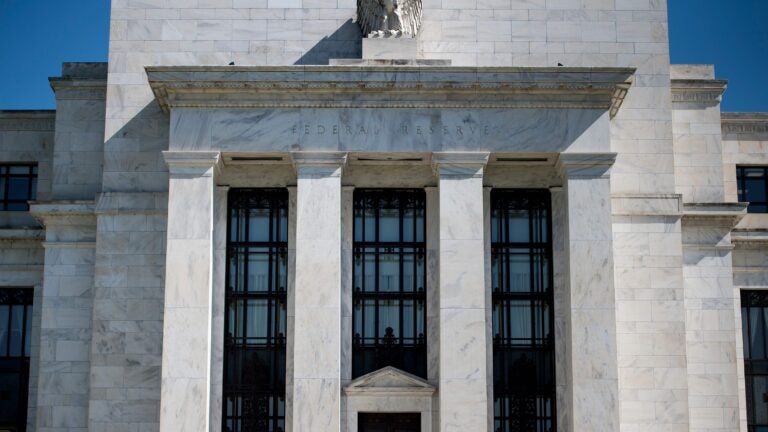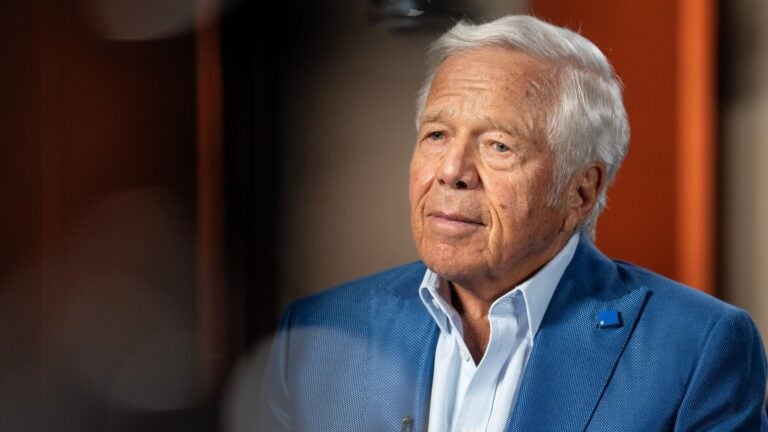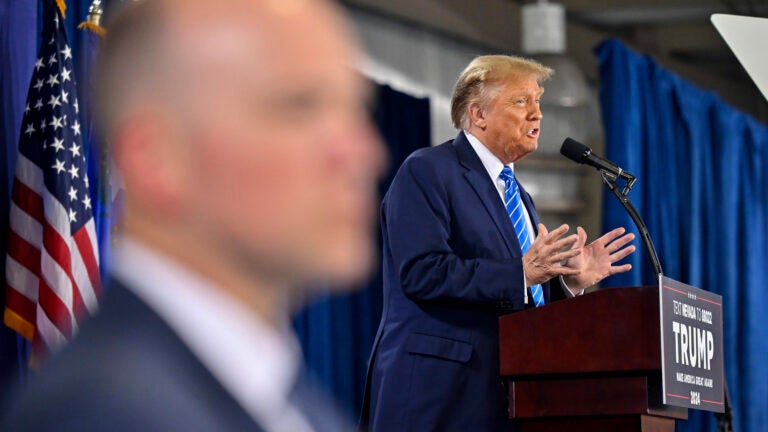Interest rates are rising. That’s great news for almost everyone.

The cost to borrow money is on the rise. That is bad news for home buyers and other prospective borrowers. It helped cause a stock market sell-off Wednesday, and prompted President Donald Trump to say that the Federal Reserve has “gone crazy.”
But it amounts to good news for the long-term direction of the economy.
In effect, the multi-trillion dollar global bond market is signaling a little greater confidence than it did just a few weeks ago that the nine-year expansion in the United States may have room to keep going for years to come, and without inflation taking off.
The yield on 10-year U.S. Treasury bonds reached a seven-year high this week of 3.25 percent (it receded some Wednesday as stocks dropped), up from 2.82 percent in August. The 10-year rate was below 1.4 percent as recently as July 2016.
But beyond those headline numbers, the details of how the prices of different types of securities have moved relative to one another tell a story that is decidedly optimistic.
For much of the last couple of years, short-term interest rates, which the Fed controls directly, have risen much faster than longer-term rates, which are set based on global supply and demand for bonds. The Fed was plowing ahead with rate increases, while investors were evidently skeptical that growth would be persistent enough to justify higher long-term rates.
In late August, the rate on 10-year government bonds was only 0.18 percent higher than for two-year government bonds, a phenomenon known as a flat yield curve. (When that number turns negative, it’s considered an “inverted yield curve” and is often a measure of looming recession.)
Since then, longer-term rates have risen faster than shorter-term ones. While the yield curve remains flat by historical standards (the gap between 10-year and two-year bonds was up to only 0.33 percent in recent days), it has moved in a direction consistent with a more optimistic outlook.
“The long end of the yield curve has finally moved to the view that this could be a more persistent recovery,” said Michelle Meyer, head of U.S. economics at Bank of America-Merrill Lynch. “It’s reflecting the possibility that this recovery has further legs.”
But, crucially, the higher long-term interest rates don’t seem to be driven by expectations that inflation will soar higher.
The yields of inflation-protected bonds have moved mostly in lock step with traditional bonds in recent weeks, suggesting that traders haven’t become more worried about inflation.
For example, inflation of 2.16 percent a year over the coming decade is implied by the current price gap between the two types of bonds, up only a smidgen since August and below its level in May.
The rise in longer-term interest rates is driven mainly not by a rise in inflation expectations, but rather by a rise in investors’ expectations for what the Fed will do and for how much compensation bond investors are demanding in lending over long time horizons.
Leaders of the Fed have indicated that they expect to keep raising their target interest rate to around 3.4 percent by the end of 2020, up from the current level of just above 2 percent.
In previous years, financial markets have been doubtful that the Fed would follow through with its forecasts for rate increases. Now the Fed’s own projections are consistent with the path of rate increases priced into markets.
“The market seems to have accepted the Fed’s rate path,” said Megan Greene, chief economist at Manulife Asset Management.
Moreover, Roberto Perli of Cornerstone Macro calculates that a big part of the higher rates is an increase in the “term premium.” That means investors are demanding more compensation than they did a few weeks ago for tying their money up for many years. This implies they now see a greater possibility that growth and short-term interest rates could surprise by rising faster than forecasters now project.
“The markets are bringing up their expectations for growth, and have been bringing them up all year,” Perli said. “The trend is clearly up, and the market is betting that will continue.”
Add it all up, and it means the world’s most savvy investors are betting that the U.S. economy will keep growing at a healthy clip, without inflation emerging, but that the Fed will have to keep raising rates well above current levels in order to prevent that inflation.
Of course, there are downsides to the higher rates. The recent stock market volatility has been fueled in part by the realization that higher rates will mean higher borrowing costs for corporations.
And the housing sector is especially sensitive to the longer-term interest rates set on the bond market, which in turn determine mortgage rates. Housing has already shown softness in some markets in recent months.
The average rate for a 30-year fixed-rate mortgage rose to 4.7 percent last week, from below 4 percent at the end of 2017, according to data from Freddie Mac.
“We are getting into that zone where the typical mortgage payment is increasing much faster than incomes, and that’s going to put a brake on some markets,” said Aaron Terrazas, a senior economist at the real estate site Zillow.
In effect, higher mortgage rates could depress the rate of price appreciation of houses, as homebuyers cannot bid as aggressively for properties as they could when rates were lower.
And markets, even deep and liquid ones like the bond market, aren’t always right, and are frequently wrong. No one would argue that the details of the yield curve, for example, offer some unassailable prediction of the future.
But for all the stock market palpitations and risks to particular interest-rate sensitive industries, the message to take from the recent rise in interest rates is an unambiguously good one: This expansion may have some life in it yet.






Conversation
This discussion has ended. Please join elsewhere on Boston.com